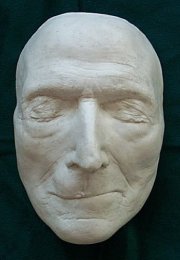WHDL - 00016951
 Visit the home page
Visit the home page
About Site Language
WHDL is viewable in multiple languages. Use the pull-down menu to select a language to view the site.
I changed my language, but I’m still seeing resources in the other languages?
If a resource or text has not been translated into your selected language, it will appear in the initially added language. We are always looking for help translating these resources. If you can help, contact us!
WHDL - 00016951


click to copy
Anonymous, A (n.d.). Death Mask of John Wesley .
Anonymous, AnonymousDeath Mask of John Wesley . , n.d.
Anonymous, AnonymousDeath Mask of John Wesley . , n.d.
Anonymous, AnonymousDeath Mask of John Wesley . , n.d.
John Wesley was an 18th century Anglican evangelist and founder of the Wesleyan Tradition.
During the late Eighteenth Century, the pseudo-science of craniology attempted to explain the differences between saints and criminals (and other human differences) in terms of variations in the size, shape, and proportions of skulls. To advance this research, impressions of the faces of recently deceased persons were taken, producing what came to be called "death masks." However, Methodists prepared John Wesley's death mask to ensure that future statuary would represent him accurately.
Wesley died on Wednesday March 2, 1791, in his eighty-eighth year. As he lay dying, his friends gathered around him, Wesley grasped their hands and said repeatedly, "Farewell, farewell." At the end, summoning all his remaining strength, he cried out, "The best of all is, God is with us," lifted his arms and raised his feeble voice again, repeating the words, "The best of all is, God is with us."
The only known surviving death mask made from John Wesley. Death masks were a standard part of funeral 'art' in the 18th century. At the very least it was a commemoration of the individual. For the wealthy and nobility it was often used as a template for the funeral casket or mausoleum adornment. In Wesley's case we know that this death mask hung on a wall; there is a string attached to its back. In the 1990s three copies of this mask were made and distributed to Duke University, Southern Methodist University and Rylands Library at the University of Manchester
The death mask was acquired by Drew University in the 1890s from Thomas Osborn, a leading figure in British Methodism. It was made approximately 6 hours after Wesley's death – note the shape of the eyes. One can also see that Wesley suffered from a stroke on his right side, and it has been suggested that the bump on his upper right lip was caused by crooked teeth – as a teenager today Wesley would be given braces!
Due diligence has been exercised in the determination that this item is in the public domain due to lack of copyright registration, expiration of the copyright term, and/or failure to comply with relevant copyright registration requirements.
3 Resources
John Wesley was an 18th century Anglican evangelist and founder of the Wesleyan Tradition.
2011
1843
2018
1878
1921
2025
1971
1971